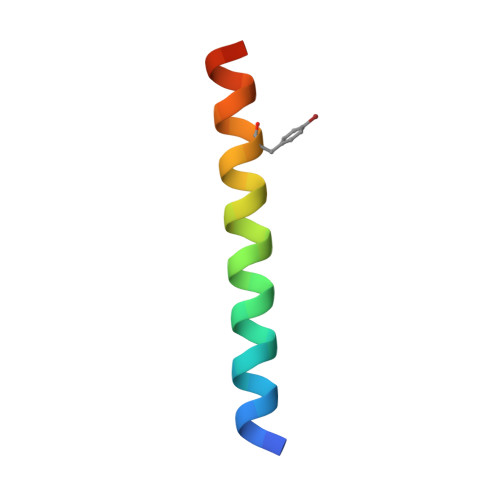Accessibility, Reactivity, and Selectivity of Side Chains within a Channel of de Novo Peptide Assembly.
Burton, A.J., Thomas, F., Agnew, C., Hudson, K.L., Halford, S.E., Brady, R.L., Woolfson, D.N.(2013) J Am Chem Soc 135: 12524-12527
- PubMed: 23924058
- DOI: https://doi.org/10.1021/ja4053027
- Primary Citation of Related Structures:
4KVT, 4KVU, 4KVV - PubMed Abstract:
Ab initio design of enzymes requires precise and predictable positioning of reactive functional groups within accessible and controlled environments of de novo protein scaffolds. Here we show that multiple thiol moieties can be placed within a central channel, with approximate dimensions 6 × 42 Å, of a de novo, six-helix peptide assembly (CC-Hex). Layers of six cysteine residues are introduced at two different sites ~6 (the "L24C" mutant) and ~17 Å (L17C) from the C-terminal opening of the channel. X-ray crystal structures confirm the mutant structures as hexamers with internal free thiol, rather than disulfide-linked cysteine residues. Both mutants are hexa-alkylated upon addition of iodoacetamide, demonstrating accessibility and full reactivity of the thiol groups. Comparison of the alkylation and unfolding rates of the hexamers indicates that access is directly through the channel and not via dissociation and unfolding of the assembly. Moreover, neither mutant reacts with iodoacetic acid, demonstrating selectivity of the largely hydrophobic channel. These studies show that it is possible to engineer reactive side chains with both precision and control into a de novo scaffold to produce protein-like structures with chemoselective reactivity.
Organizational Affiliation:
School of Chemistry, University of Bristol, Bristol BS8 1TS, United Kingdom.
















